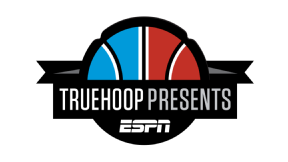
TWO DECADES AGO, a team's basketball operations department could fit inside a minivan. A new brand of owner and an infusion of revenue have professionalized both culture and process in the modern NBA. Gone are the mom-and-pop franchises of yesteryear. Today, it's a bustling firm with a sprawling org tree -- and many of the positions didn't exist five years ago.
Whether the person in charge is called general manager or president of basketball operations, the "general" and "manager" have never been more vital. In 2017, there are infinite data points to oversee and so many constituencies in the organization to supervise. It's not enough anymore to merely have refined taste in basketball players, or to be a strong negotiator or a charismatic operator whose saving grace is being "good with people." The present-day general manager has to indicate goals clearly, design the process by which they're pursued and oversee those performing the work.
The breadth of the job description is why, increasingly, people around the NBA characterize the gig as "CEO." The ranking basketball exec tells a franchise's story -- to his owner, subordinates, coach, players, their agents, the business folks, the media and the fan base.
Yet for all of its complexities, that story is ultimately written in the language of basketball -- that part hasn't changed. An eye for talent, an intuitive feel for the intangibles that compose a winning team, and an appreciation for the traditional and new performance metrics are all prerequisites for success.
How do NBA owners and their top business execs identify a good candidate to lead basketball operations when they see one?
We spoke to industry insiders, including long-time execs on the basketball and business side, general counsels and existing general managers of the old and new guard to get a sense of what's important in 2017.
